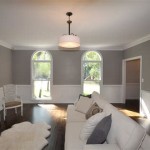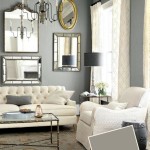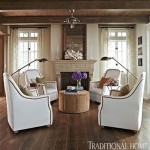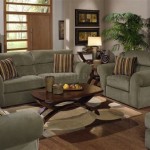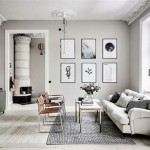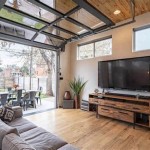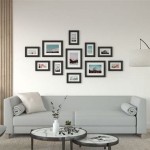Blue and Brown Living Room Rugs: A Versatile Foundation for Interior Design
The selection of a rug is a pivotal decision in the design of a living room. It serves not only as a functional element providing comfort and insulation but also as a crucial aesthetic component that anchors the space, defines its style, and ties together disparate elements. Within the vast array of available colors and patterns, the combination of blue and brown offers a particularly compelling option, marrying the calming serenity of cool tones with the grounded warmth of earthier hues. This article delves into the characteristics, applications, and considerations surrounding blue and brown living room rugs, exploring their versatility and potential to transform a living space.
Blue and brown, when paired effectively, create a sophisticated and balanced visual. The inherent coolness of blue contrasts beautifully with the warmth of brown, preventing either color from dominating the space. This balanced interaction makes blue and brown rugs exceptionally adaptable to various decorating styles, from traditional and rustic to modern and coastal. The specific shades of blue and brown chosen further influence the overall aesthetic, allowing for customization that complements existing furniture, wall colors, and decorative accessories.
Understanding the Color Psychology of Blue and Brown
The psychological effects of color are well-documented and play a significant role in how individuals perceive and interact with their environment. Blue is often associated with tranquility, peace, stability, and trust. It can evoke feelings of calmness and relaxation, making it a popular choice for spaces intended for rest and rejuvenation. Different shades of blue elicit varied emotions; lighter blues tend to be more airy and refreshing, while darker blues can be perceived as sophisticated and authoritative.
Brown, on the other hand, is inherently linked to nature, earth, and stability. It communicates feelings of warmth, comfort, security, and reliability. Brown shades can range from light tans and beiges to deep chocolates and rich mahogany hues, each contributing a distinct character to the overall ambiance. Light browns create a sense of openness and neutrality, while darker browns introduce a feeling of richness and grounding.
When blue and brown are combined in a rug, these psychological effects are amplified. The calming influence of blue is balanced by the grounding warmth of brown, creating a space that feels both inviting and serene. This combination is particularly effective in living rooms, where the goal is to foster relaxation and social interaction simultaneously.
Exploring Different Styles and Patterns
Blue and brown living room rugs are available in a wide range of styles and patterns, each catering to different aesthetic preferences and design schemes. The choice of style significantly impacts the overall feel of the room, defining its character and influencing the selection of other decorative elements.
Traditional Rugs:
Traditional blue and brown rugs often feature intricate patterns such as Persian, Oriental, or floral designs. These rugs are typically characterized by their elaborate details, rich textures, and a sense of formality. The blue in traditional rugs can range from deep navy to muted indigo, while the brown is often represented by warm shades of beige, tan, or chocolate. These rugs lend an air of elegance and sophistication to a living room, complementing classic furniture styles and creating a sense of timeless appeal.Modern Rugs:
Modern blue and brown rugs embrace simplicity, geometric shapes, and abstract designs. They often feature clean lines, bold color blocks, and minimalist patterns. The blue in modern rugs may be a vibrant turquoise or a cool teal, while the brown can be a light gray-brown or a dark espresso. These rugs contribute a contemporary and stylish aesthetic to a living room, pairing well with minimalist furniture and creating a sense of openness and modernity.Coastal Rugs:
Coastal blue and brown rugs evoke the relaxed atmosphere of a beachside retreat. They often feature nautical stripes, wave patterns, or motifs inspired by marine life. The blue in coastal rugs is typically a light sky blue or a deep ocean blue, while the brown is represented by sandy beiges, driftwood grays, or weathered browns. These rugs create a breezy and inviting atmosphere, complementing light-colored furniture and creating a sense of coastal charm.Rustic Rugs:
Rustic blue and brown rugs embrace natural textures, earthy tones, and a sense of ruggedness. They often feature distressed patterns, geometric designs inspired by nature, or woven textures that mimic natural materials. The blue in rustic rugs may be a muted denim blue or a deep indigo, while the brown is represented by rich browns, tans, and creams. These rugs create a warm and inviting atmosphere, complementing natural wood furniture and creating a sense of cozy comfort.The specific pattern chosen for a blue and brown rug further influences the overall aesthetic. Geometric patterns create a sense of order and structure, while abstract patterns add a touch of artistic flair. Floral patterns introduce a sense of organic beauty, while striped patterns create a dynamic visual effect. The key is to select a pattern that complements the existing decor and reflects the desired style of the living room.
Considerations for Choosing the Right Blue and Brown Rug
Selecting the ideal blue and brown rug for a living room requires careful consideration of several factors, including size, material, pile height, and maintenance. Making informed decisions in these areas ensures that the rug not only enhances the aesthetic of the room but also provides comfort, durability, and ease of care.
Size:
The size of the rug is crucial in defining the space and anchoring the furniture arrangement. A rug that is too small can make the room feel disjointed, while a rug that is too large can overwhelm the space. As a general guideline, the rug should be large enough to accommodate at least the front legs of the major furniture pieces, such as the sofa and chairs. Alternatively, the rug can be large enough to encompass all the furniture within the seating area, creating a cohesive and defined space. Measure the living room carefully before selecting a rug size, taking into account the furniture placement and the desired amount of exposed flooring.Material:
The material of the rug affects its durability, texture, and overall feel. Common rug materials include wool, synthetic fibers (such as nylon, polyester, and polypropylene), and natural fibers (such as cotton, jute, and sisal). Wool rugs are known for their durability, softness, and natural stain resistance. Synthetic rugs are typically more affordable and offer good stain resistance and durability. Natural fiber rugs provide a rustic and textured look, but they may be less durable and more susceptible to staining.Pile Height:
The pile height of the rug refers to the length of the fibers. High-pile rugs offer a plush and luxurious feel, while low-pile rugs are more durable and easier to clean. High-pile rugs are best suited for low-traffic areas, while low-pile rugs are ideal for high-traffic areas such as living rooms. Consider the level of foot traffic in the living room and the desired level of comfort when selecting the pile height of the rug.Maintenance:
The maintenance requirements of the rug should be considered before making a purchase. Some rugs require professional cleaning, while others can be easily cleaned at home. Wool rugs typically require professional cleaning to maintain their appearance and prevent damage. Synthetic rugs can often be cleaned with a mild detergent and water. Natural fiber rugs may require special cleaning products to prevent staining and discoloration. Consider the amount of time and effort required for rug maintenance when making a selection.Shade Variation:
The precise shades of blue and brown in the rug should complement the existing color palette of the living room. Consider the wall color, furniture upholstery, and decorative accessories when selecting the shades of blue and brown. For example, if the living room features light-colored walls and furniture, a rug with darker shades of blue and brown can provide a grounding contrast. Conversely, if the living room features dark-colored walls and furniture, a rug with lighter shades of blue and brown can brighten the space and create a sense of openness.Moreover, the pattern's scale should be appropriate for the size of the room. A large, bold pattern can overwhelm a small room, while a small, intricate pattern may get lost in a large room. A medium-sized pattern is often a safe choice that works well in most living rooms.
By carefully considering these factors, individuals can select a blue and brown living room rug that not only enhances the aesthetic of the space but also provides comfort, durability, and ease of care, creating a harmonious and inviting environment.

Calithea Vintage Classic Abstract Floral 8x10 Area Rug In Blue Brown And Beige

8x10 Blue Beige And Brown Modern Abstract Hand Knotted Wool Bambo The Rug Decor

Blue Brown Rug 8x10 Oversize Heriz Oriental Boho Rugs For Living Room Vintage 5x8 Rustic Light Etsy

Hudson Waves Blue Brown Geometric Modern Casual Area Rug Easy To Clean Stain Fade Resistant Shed Free Abstract Contemporary Natural Lines Multi Soft Living Dining Room Walmart Com

Blue Brown 9 Ft X 12 Modern Abstract Soft Washable Polyester Area Rug Gw Phk 3443m9ps The Home

Echo Modern Geometric Blue Brown Area Rug 5x7 5 3 X 7 Hand Carved Stain Fade Resistant Soft Plush Walmart Com

Brown Blue Area Rug Modern Geometric Pattern Low Pile Rugyourhome

Home Dynamix Buffalo Creek Blue Brown 8 Ft X 10 Area Rug 1 17393 309 The

Finn Blue Brown Area Rug Clearance

Calithea Vintage Classic Abstract Floral 8x10 Area Rug In Blue Brown And Beige

